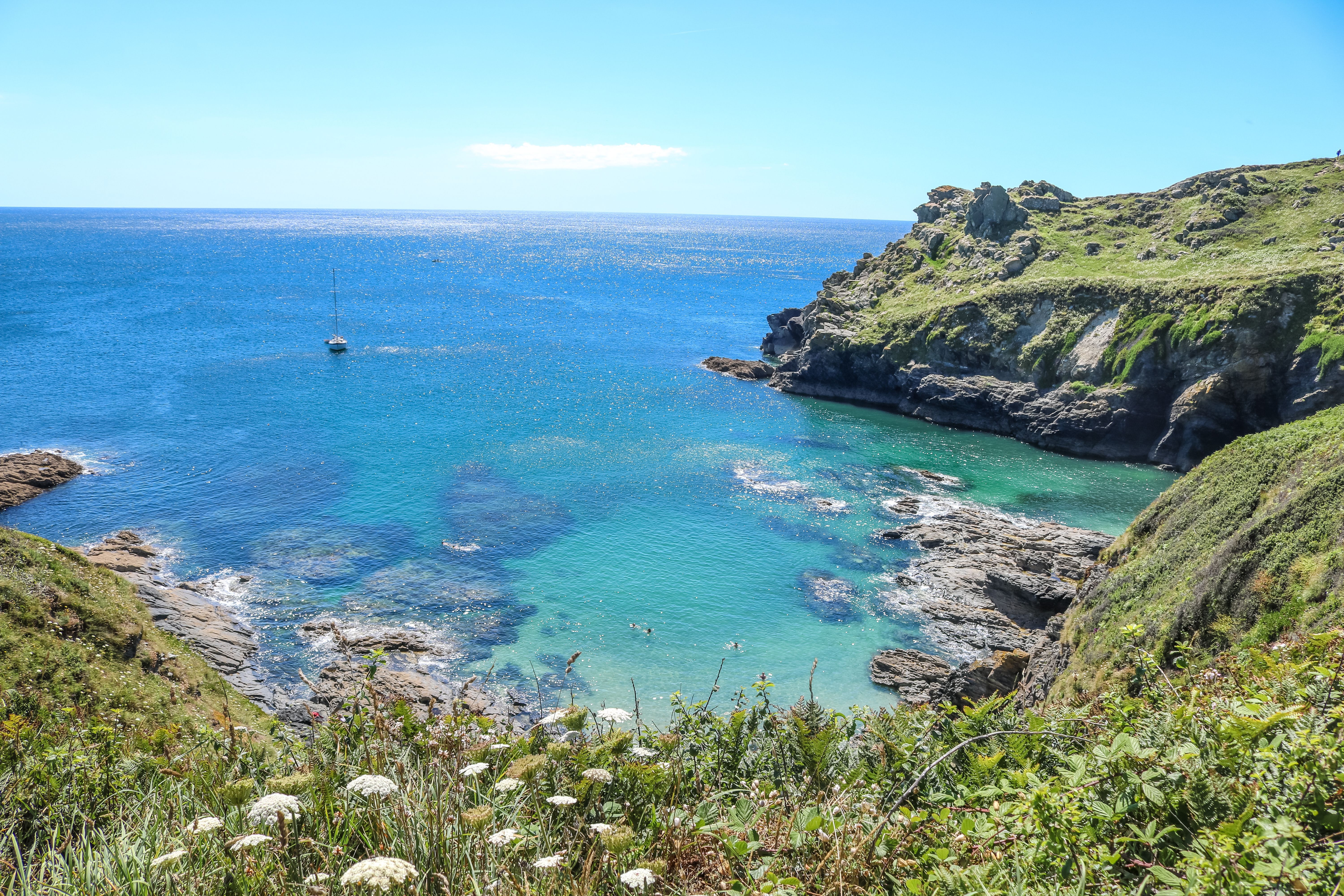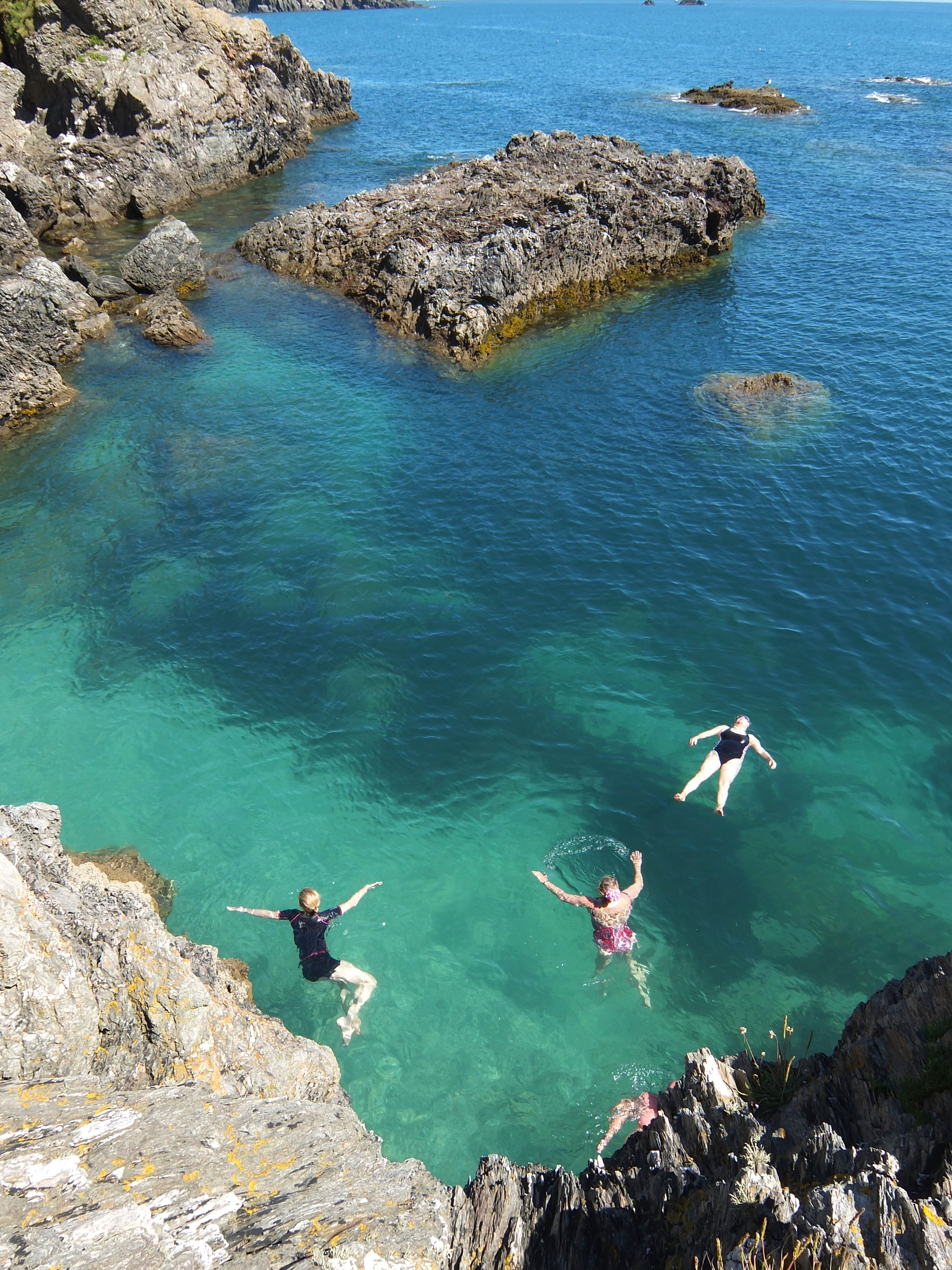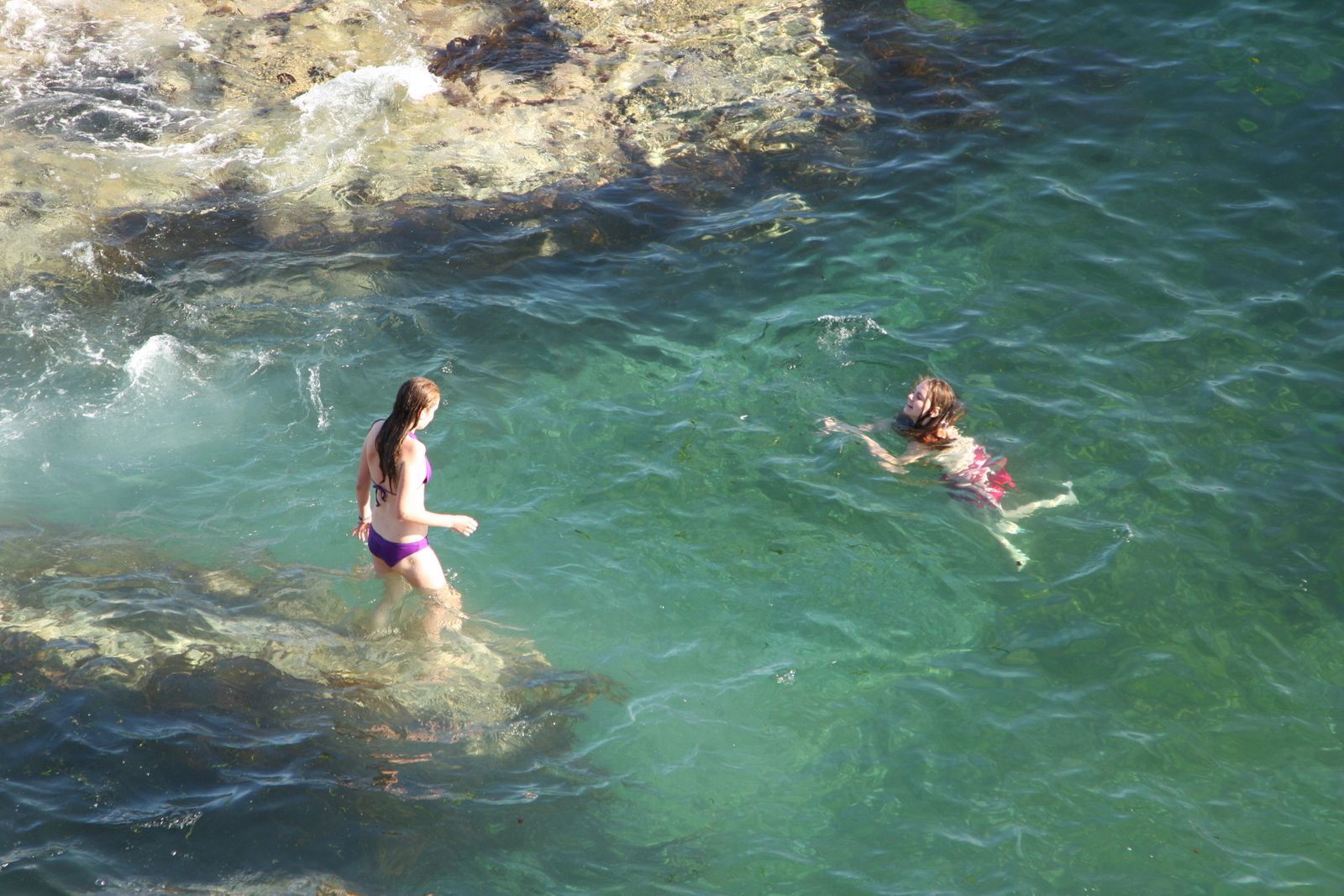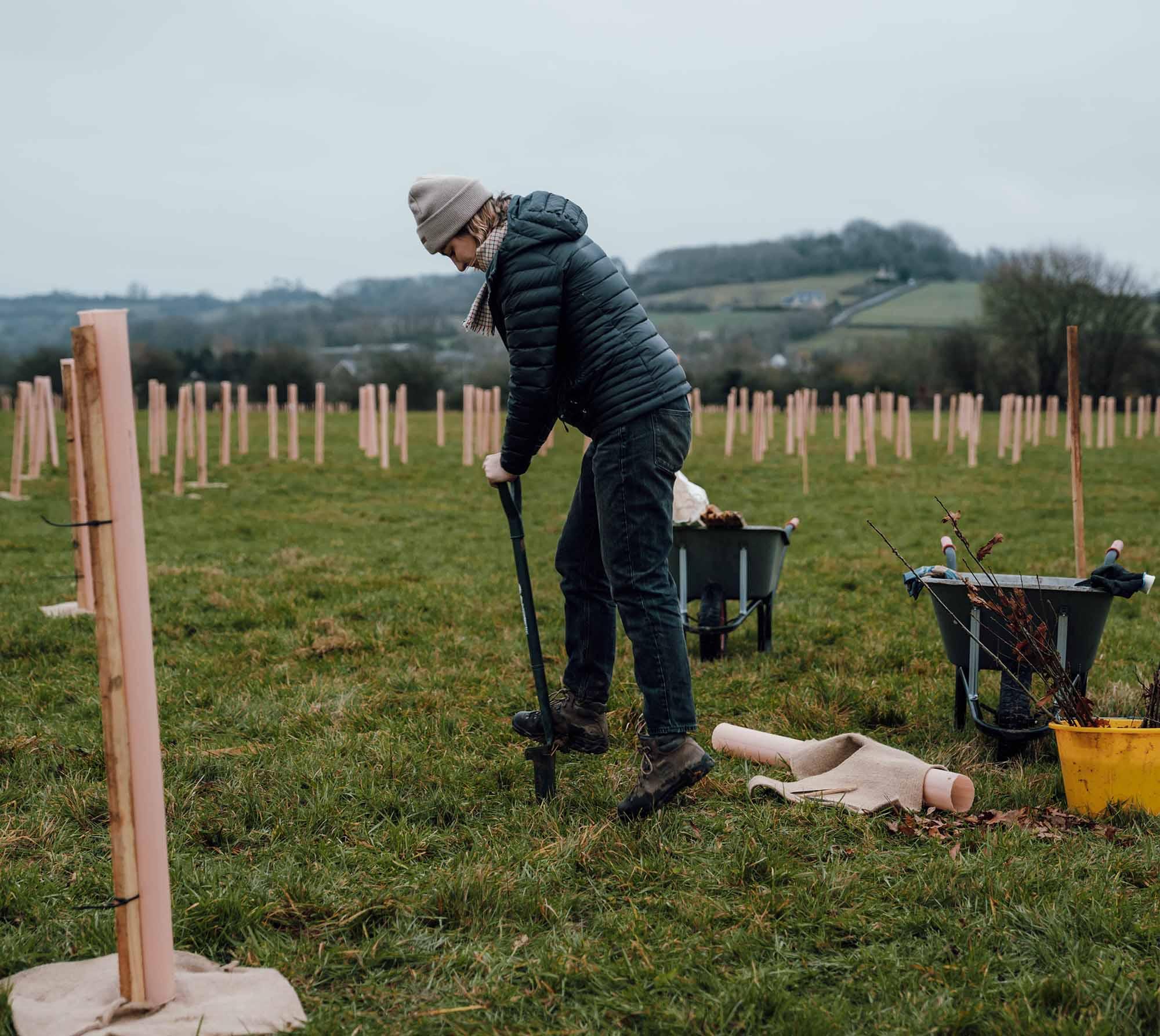- Location
- Glamping
Special occasions
- Stories
- Gift Cards
- About us
About Canopy & Stars
More from Canopy & Stars
More at Sawday's
Cliff paths and clear water
Wild Things, publishers of Hidden beaches and the Wild Swimming Walks series, share some of their favourite coastal adventure walks.
Prussia Cove Circular - West Cornwall
Walk around this notorious stretch of smugglers coastline, with a series of beautiful coves with clear turquoise waters. The walk starts at popular Perran Sands where you can enjoy your first dip of the day before setting off along the coast path towards Trevean Cove. The cove can be accessed down a gully that was once a slipway used by fishermen to haul their boats onto shore. While you can swim from the beach, it’s much more fun to explore the rocky outcrops off to the left, with pools and gullies that you can swim in at low tide.
The walk continues up over Cudden Point, a rugged headland with a rocky spine resembling the back of a prehistoric monster. Soon you will be able to spot the series of coves and beaches that make up an area known as Prussia Cove - first Piskies Cove, then Bessy’s Cove and finally King’s Cove. The name Prussia Cove comes from the Carters, a notorious family of ‘freetraders’, who smuggled their illegal cargoes of French rum into the bay in the 18th century. Their leader, John Carter gained the nickname “the King of Prussia” from a game he played with his brothers as a child.
We recommend swimming from Bessy’s Cove, which is named after the landlady of an unlicensed ale house which once stood above the cove. From the beach, if you swim off to the left you will find rocky lagoons to explore and rocks to sunbathe on. Above the beach look out for the charming thatched Cliff Cottage which was used as a filming location for Ladies in Lavender. The cove itself was used in the original Poldark back in the 1970s.
The return journey takes you up past Cliff Cottage and onto a lane, before taking the footpath over fields and through farm buildings. It’s a very attractive route, with views back to St Michael’s Mount. The walk finishes back in the small village of Perranuthnoe.

Start Point Circular – South Devon
The car park at Start Point must be a contender for one of the best views from any car park in the UK, with spectacular views across to Beesands and the ruined village at Hallsands. The walk down to the lighthouse is like walking over the spiny tail of some gargantuan beast, and indeed the name ‘start’ derives from the Anglo-Saxon term ‘steort’ meaning ‘tail’. Continuing over the dragons back, the path takes a dramatic turn as it winds its way around the vertiginous contours of the coast, dropping right down to exposed cliff edges with sharp drops to rocky bays and gullies below.
As the path drops down closer to the sea at Peartree Point, you can reach a secret shingle beach surrounded by several rocky islands. It’s a delightful spot for a dip, although stay close to the coast, as there are some strong currents out near the islands. A natural channel between sea cliffs and the rocky islands guides you out into the azure waters of a lagoon, with the lighthouse standing as a guardian in the distance.
You get great views over Great Mattiscombe Beach as you walk around the headland. Set up base on the sands and prepare for some delicious swimming in these sparkling waters. It’s a much shorter walk back up to the car park through some beautiful fields. We like to make a weekend of it, camping at East Prawle and enjoying an ale or three at the legendary Pig’s Nose Inn.

Dancing Ledge Circular - Dorset
Start at pretty Worth Matravers and descend down the valley to Winspit, a natural rock platform and cove at the end of rolling fields beneath. An old bridleway passes through wildflower meadows and medieval hillside ridges, then a small waterfall leads down to a large rocky ledge extending to the edge of the sea. There’s a lagoon to the left, rock ledges for jumping, plus several impressive limestone pillars.
The coast path heading west carries on to a similar set of quarries known as Seacombe Cliff. This cove and ledge also provide opportunities for jumping and diving, though the ocean drop-off is deeper. Another mile brings you to the most famous of the Purbeck quarries. Here at the bottom of rolling downs a great sea-level platform, has been hewn from the cliffs. It’s known as Dancing Ledge, because it has the standard dimensions of a ballroom. On a hot day, lie on the ammonite-studded rocks until you are well and truly baked, then tiptoe to the edge of this deep-blue abyss and dive straight down. Feel the sea soothe your hot, prickly skin, watch the sun’s rays filter through layers of green and listen to the guttural groans of the heaving sea moving on the distant sea bed.
If the sea is too rough, then you can always take a dip in the natural rock pool, blasted from the rock ledge for use by pupils at nearby Spyway boys’ prep school at the turn of the century. Ian Fleming, creator of James Bond, reminisced about the invigorating early morning swims here and film-maker Derek Jarman, also a former pupil, was so moved by his swims that he entitled his autobiography Dancing Ledge.
The walk returns uphill to Worth Matravers, where you can enjoy a well-earned pie and pint in the quirky Square and Compass pub.

Scolt Head and Burnham Overy Staithe, Norfolk
Scolt Head is Britain’s very own desert island. A whaleback of white sand and dune hills, decked with green marram grass, it is accessible only by small sailing boat or by swimming. It’s also one of the best stretches of beach in Norfolk.
To the north of the island is the sea but the south side is a network of snaking sandy channels and pools which, with the help of a little local knowledge, you can navigate. The best routes out are from Burnham Overy Staithe, one of the prettiest harbours on this coast and also where Nelson, whose father was a rector at nearby Burnham Thorpe, learned to swim and sail. The raised path follows the right-hand side of the creek up to Burnham beach, a dazzling stretch of sand with panoramic views from the dunes atop Gun Hill. A channel empties across the beach to make a warm paddling and swimming pool at low tide, but head west up the beach to arrive at the deep pool that separates you from Scolt Head Island.
Brightly coloured dinghies are stored safe on the Island’s sands opposite: this is a favourite local swimming hole and a sheltered spot for learning to canoe and sail. It makes a great swimming pool on a turning or rising tide but watch out for seaward currents on a spring falling tide.
From Scolt Head island you can return or brave swimmers can swim the channel over to Gun Hill dunes. Beware of strong seaward currents when the tide is flowing out. This is a superb wild white beach which stretches for miles. From here a path follows the creek back on its east side to Burnham Overy Staithe.
Porthgain and Abereiddi - Pembrokeshire
Between Strumble Head and St Davids Head stretches 20 miles of some of the most perfect coastline in Wales. The longer version of the walk begins at Aber Bach at the bottom of bumpy lanes and woods filled with bluebells in spring and a set of large sea caves with walls of pink and purple rock and dark pebble coves inside.
Next comes the tiny fishing village of Abercastle with an island with a cave that runs right through its centre - it makes a fantastic swim or scramble. The village is overlooked by the ancient Careg Sampson ‘cromlech’ or burial chamber. We decided to set out to explore Ynys-fach, a small islet just a mile to the north-east. From the coast path we climbed over a fence and down a steep overgrown path to a double shingle cove. A swim led round to a deep cave that extended all the way through the islet, as at Abercastle, and a path with ropes led up to the island’s flat top, which was carpeted in sea thrift. Here we found the remains of a campfire and decided to sleep wild, high above the sea, the sparks from our fire flying into the dark night as we watched the stars moving gently across the sky.
Head on east to Trefin with its ruined mill on a stream leading down to the beach. Next is Porthgain, a pretty harbour village with a fine dining fish and chips restaurant and the Sloop Inn. Climb out of the harbour to pass the remains of several old quarry buildings. From here there are more treats, including a swim through a giant arch at Porth Dwfn, the fine wide sands of Traeth Llyfn and finally Abereiddi’s famous ‘Blue Lagoon’, a disused quarry long since breached by the sea to become an inland lake. The quarry’s old wheelhouse provides three platforms for leaping into the deep blue abyss below – a famous rite of passage for local swimmers and visitors alike.
The return is through tiny lanes via Llanrhian, Trefin and Abercastle.









